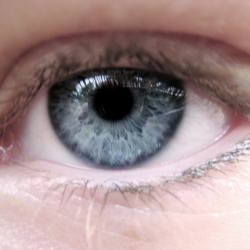
Retaining the ability to communicate effectively can be one of the key challenges facing those who suffer a severe restriction in mobility. Conditions such as Amyotrophic lateral sclerosis (ALS) can reduce a persons capacity for voluntary movement to the eyes only, though even this is not always possible. When eye movement is possible however, it offers an opportunity for communication and expression, as previously highlighted by the Eyewriter project. New research conducted at the Université Pierre et Marie Curie-Paris may offer a further breakthrough in this area by enabling writing in cursive using only eye movements.
Though most of us regularly move our eyes in sophisticated ways during our daily lives, we are normally unable to control these movements smoothly in any direction, hence making the tracing of cursive writing by eye movement impossible, until now. The new eye-writing technology works by tricking the eye’s neuromuscular machinery into voluntarily producing smooth eye movements in arbitrary directions.
This is achieved by the use of changes in contrast through a specially designed display which comprises 500 disks of identical contrast (∼1 degree of visual angle) changing polarity about the mean luminance over time at ∼10 Hz. This produces an optical illusion called reverse-phi motion which allows viewers to essentially follow their own eye movements.
“Contrary to the current belief, we show that one can gain complete, voluntary control over smooth pursuit eye movements," explains Jean Lorenceau of Université Pierre et Marie Curie-Paris. "The discovery also provides a tool to use smooth pursuit eye movements as a pencil to draw, write, or generate a signature."
The discovery that such eye movement was possible came accidentally: Lorencau was moving his own eyes in front of an unusual visual display in his laboratory and, while doing so, he discovered some odd effects, such as being able to see his own eye movements. Following a relatively short time spent practicing, the scientist was then able to take finer control over these movements and reports a speed of 25 letters per minute to be achievable, though each individual’s speed will depend on the amount of time spent training.
